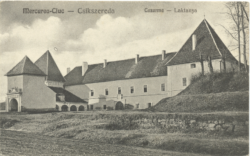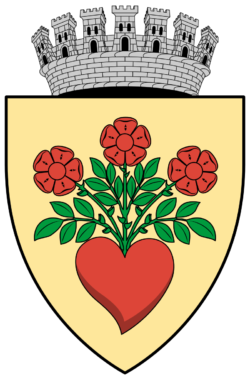Csíkszereda

Csíkszereda (Miercurea Ciuc, Szeklerburg), is in Székelyföld / Székely Land in Transylvania, in Romania. This city was built at trade junctions and has always been a Catholic center for the Hungarian Székelys. You can read more about the Hungarian Székely people of Transylvania here:
https://www.hungarianottomanwars.com/essays/who-were-the-szekelys/
Also, you can find here pictures of Csíksomlyó (Şumuleu Ciuc) which is now part of Csíkszereda. Csíksomlyó is famous for its pilgrimage at Pentecost.
As the Székelyföld area had been part of the Eastern Borderland of the Hungarian Kingdom in the 11th century, two castles were built in the city’s proximity, facing each other. They were called Kisvár and Őrvár but they were destroyed in the 16th century.

There was a valley between the two castles, it was called “Ördögvölgy” (Devil Valley). This valley was flooded by the water of the Olt River in case of an attack. Its third castle was called “Három” (meaning “three” in the Hungarian language) and was built on the top of a hill called “Három-tető” (Three-top). It was constructed in the early 12th century.

Csíkszereda received its name from the markets held there on Wednesdays as “szerda or szereda” stands for Wednesday in the Hungarian language. The settlement was mentioned this way first in 1558. (In this document, the mother of Prince János Zsigmond gave a tax exemption to the town.) The famous village of Csíksomlyó was attached to Csíkszereda just at a later time. The Hungarian Székelys had a Catholic college founded there in 1630.

One of the oldest buildings in Csíkszereda is the Mikó Castle, commonly known as the “Castle”. Its builder, Mikó Ferenc of Hídvég (1585-1635), was the vice-captain of Csíkszék from 1611. In 1613 the new prince, Bethlen Gábor, promoted the young and energetic Mikó to his former position, making him the chief captain of the Csíkszék region. Mikó had been an unconditional supporter of the prince since his youth and had risen from the ranks of the middle nobility to become a great lord.

From 1622 he was a councilor, treasurer, and later master of the court. Count Mikó Ferenc was also a famous chronicler. He was one of the prince’s most skilled diplomats and a prominent figure in Transylvanian political life in the early 17th century. The building, then called Mikó-újvár (újvár = new castle), was begun by the chief captain on 26 April 1623. It is likely that the Italian Giacomo Resti, who worked as a court architect in Transylvania between 1615 and 1634, was involved in the construction of the castle in the Old Italian style.

The construction of the almost finished rectangular mansion, with a floor area of about 75×70 meters, probably ended with the death of the builder in 1635. The building’s style is most closely related to the castles of Radnót, Alvinc, and Szárhegy.

On 21 October 1661, the Turkish and Crimean Tatar troops of Ali Pasha of Temesvár invaded Csík, captured the castle, burned it, and caused great harm there. Traditionally, the Székelys gathered in the city in 1650 and 1665 as well as in 1677 where they dealt with their privileges.

The dilapidated building was restored decades later by order of the Austrian general Stephan Steinville (1714-1716), as the stone inscription above the entrance gate testifies. The rebuilt castle was surrounded by four new outer ramparts with Italian bastions, the remains of which can still be seen on the south side. The Austrians built a small, angular powder magazine on the west side of the castle.

The fortified mansion or we can call it a castle, played a role in the eastern defense of the Habsburg Empire. It was the barracks of the imperial troops until 1764 when the Székely border guards were organized, and from then until 1849 it was the headquarters of the 1st Székely Infantry Regiment. During the revolution of 1848-49, it was the military headquarters of Gál Sándor.

Even after the end of the War of Independence, the castle was still in the hands of the military authorities. In 1890, a wing was added to the sides of the gateway bastion, which was demolished in 1990. In the 1880s the moat was gradually filled in. Except for brief periods when it was used by various institutions and offices, the castle was used continuously by the military until the mid-20th century. In 1970, after major repairs, it became the seat of the Székely Museum of Csík, founded in 1930 which is worth visiting once you are there. The last major renovation of the building took place between 2010 and 2013.

Source: partly from https://www.csikimuzeum.ro/hu/muzeum/miko-var-tortenete
Dear Readers, I can only make this content available through small donations or by selling my books or T-shirts.


































